Zesta Crackers
In the world of soup crackers, Zesta crackers have a loyal following. However, most people are only aware of the Saltine cracker and have never heard of the delightful Zesta cracker. There are various kinds of Zesta crackers, and they go perfectly with soups, chili, or hors d’oeuvres.
The company that first made Zesta Crackers originally called them Premium Soda Crackers. They have been around for so many years that they could probably compete with any of the other candies and treats out there for the longest-running successful food product. It is a bit unfortunate that the Saltine cracker brand, rather like Kleenex, has become the most recognized type of this kind of cracker, thereby casting delicious crackers like Zesta in the shade.
Please leave a review or any memories of this snack in the comments at the bottom of this page. Thank you!
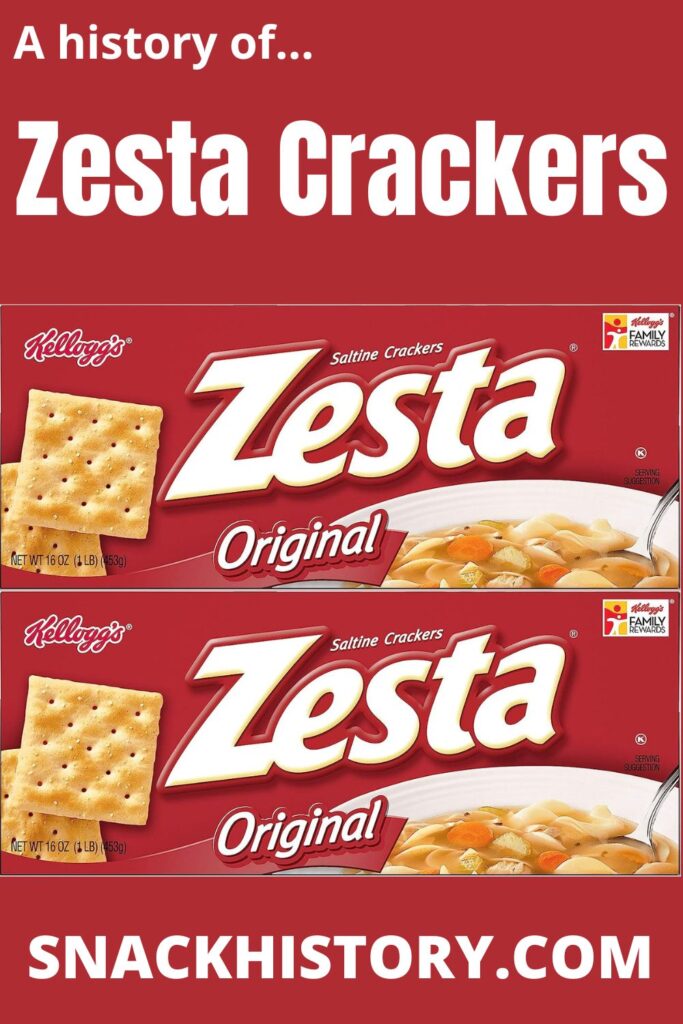
History
The Strietmann Biscuit Company built their own building to manufacture crackers in 1899 along the Miami and Erie Canal. The Zesta Cracker was not called the Zesta at this time. Biscuits were treated more like a staple for everyday households during this era when working-class people did not make living wages and often struggled to make ends meet. A tin of biscuits could be a big part of the daily meals that factory workers consumed prior to unions and a standardized minimum wage.
In 1927, the biscuit that would become Zesta, became part of the merger that created the United Biscuit Company. This company merger brought together Hekman Biscuit Company, Bowman Biscuit Company, Keebler, and Strietmann Biscuits to help make production easier and faster. Biscuits were very popular during this period and would continue to be essentials for many households throughout the Great Depression and throughout the years when World War II was going on.
Simple fare that could sustain families and that was portable enough to go along with those who were on the move was hard to find during both the Depression and the War. Biscuits and a few other tinned or boxed food items became the standard for many families because they could be carried with families looking for work in the 20s, and they were easy to bring with you into bomb shelters during air raids in Europe.
Canned food took care of the rest of the ingredients of the simple meals that people were eating during these periods. Biscuits, or crackers as we now know them in the United States, became one of the reasons that many families didn’t starve during tough times.
In 1966, Keebler decided to adopt the crackers that Streitmann’s had made and name them the Streitmann’s Zesta saltine brand. Lots of changes were going on in the world of snacking and baked goods at this time, and Keebler also took over the manufacture of the Girl Scout Cookies that little girls sold door-to-door. Up until this time, mothers and daughters made the cookies at home and then tried to sell them to people in their neighborhood.
Homemade goods were slowly being replaced by baked goods and snacks that you could buy in the store, and there was an increasing amount of variety in the diets of even lower- and middle-class families. Rebranding some of the common staples that people had had in their homes to accompany most meals was essential for all snack food companies during the 60s. The saltine-style cracker needed a makeover as a snack, and Keebler was able to do just that.
The Keebler company was a good hand at advertising, and they helped keep Zesta Crackers visible and successful. Lots of other cracker products had joined the market at this point, and “biscuits” were not a staple for most homes. This was the era where saltines were mostly consumed by small children or kids that were home from school sick. Yet Keebler managed to make sure that no one forgot about Zesta Crackers and that they stayed on the shelves of stores around the country.
The Keebler Company also absorbed other biscuit brands and snack companies along the way and even got a contract to produce treats that were based on Sesame Street. These kinds of mergers kept Zesta Crackers selling until the Kellogg Company bought Keebler in March of 2001. Ferrero SpA has since purchased the brand, but the crackers have continued to carry the Keebler name despite all of these changes. The Keebler Elf still continues to peek out around the logo in the top corner of all of the various boxes of Zesta products and is also present on the tins of Keebler Export Sodas.
For the time being, Zesta and traditional Saltines continue to be the most recognized and therefore, the most popular of the original soda cracker style snacks that would become generically called Saltines. The Ferrero company has been quite loyal to the branding and marketing styles of the various products that it has purchased in recent years, and there is no indication that they plan to do away with the Keebler Elves or that they want to change the Zesta to be anything other than the classic biscuit that it has always been.
Few products in today’s market have had the staying power of the Zesta Cracker, and there are so many companies that make treats that come and go like a flash in the pan. While most people in the US or the UK don’t keep a tin of biscuits in their home for daily meals each day, the popularity of the soda cracker has not waned much over time. There is something delightfully simple and satisfying about Zesta Crackers, and there seems to be no chance that these simple but filling little crackers will ever lose their popularity.
Marketing
When Zesta Crackers first started being called Zestas, the word saltines was always used as well. There are years of packaging and advertising efforts for this product that list them as Zesta Saltines. When crackers started to be sold in boxes, rather than paper wrappers or tins, Zestas were associated with a variety of marketing ploys, such as winning 10,000 cans of Campbell’s soup for those who bought the new Zesta Crackers in a box.
It’s hard to imagine now, but there were many years when crackers of this kind were sold in cardboard boxes that had removable lids, rather like a shoebox. The Keebler Company called this the “Crisp-Lock Top” and offered you one pound of crackers inside of a box that you could open and close. The ads often said something like, “Rejoice! A cracker box that won’t make you mad!”
Zesta Crackers are still sold in boxes, but you only get 16 ounces in a box, and they are not made like shoe boxes. The Zesta branding has always been very simple, a stark white set of letters that declare that the product name is on the top of the box, and usually, there is a photographic-style image of the crackers in the middle under the Zesta name. A soup bowl typically takes up the bottom of the box’s real estate. On the sides of the box, you can expect to see a much larger version of the logo with the same images arranged slightly differently.
The Export Sodas product is sold in a green tin that shows the Keebler elf standing by a stack of Zesta crackers. Tinned biscuits are still very common in the UK, and it can be really delightful to check out this other version of the packaging for this product. There is something really fun about being able to open a tin and pull out some saltines to enjoy if you are living in a country that doesn’t sell crackers in this kind of container.
The Keebler Elf commercials for Zesta products are probably some of the most memorable of the various TV ads that were run for this product. They featured a Keebler elf baking the crackers in an oven, and the home of the elves, which was always a cozy-looking tree, usually made an appearance as well. Keebler ads with the elves included that were made with distinctive cartoon images are usually the first thing that people mention when the company is brought up.
If you have never watched a Keebler elf commercial, you really need to check out vintage ads for cookies and for crackers that were made by Keebler. The elves remain a charming reminder of one of the features of the company that made the brand so popular, and it is lovely that they have continued to be a part of the livery of these products despite a couple of mergers and sales to different owners over the years.
Logo
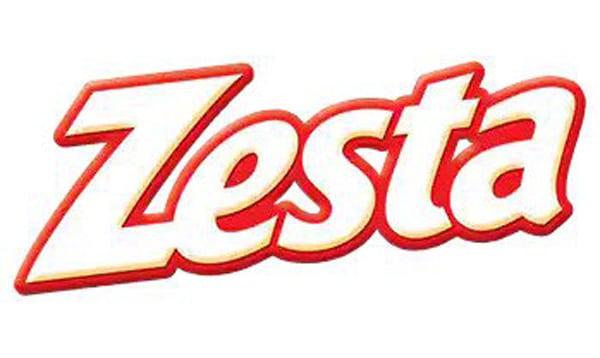
Varieties
- Zesta Original
- Keebler Export Sodas
- Zesta Wheat Crackers
Ingredients
From the Kellogg’s site:
- Enriched flour (wheat flour, niacin, reduced iron, vitamin B1 [thiamin mononitrate], vitamin B2 [riboflavin], folic acid)
- soybean oil (with TBHQ for freshness)
- salt
- corn syrup
- Contains 2% or less of baking soda, yeast, soy lecithin
Nutrition
| Serving Size: | 5 crackers (15g) | % Daily Value* |
| Amount Per Serving | ||
| Calories | 60 | |
| Total Fat | 1.5g | 2% |
| Saturated Fat | 0g | 0% |
| Trans Fat | 0g | |
| Polyunsaturated Fat | 0.5g | |
| Monounsaturated Fat | 0g | |
| Cholesterol | 0mg | 0% |
| Sodium | 200mg | 9% |
| Total Carbohydrates | 12g | 4% |
| Dietary Fiber | 0g | 0% |
| Sugars | 0g | |
| Added Sugars | 0g | 0% |
| Protein | 1g | |
| Vitamin D | 0mcg | 0% |
| Calcium | 0mg | 0% |
| Iron | 0.6mg | 3% |
| Potassium | 10mg | 0% |
- The % Daily Value (DV) tells you how much a nutrient in a serving of food contributes to a daily diet. 2000 calories a day is used for general nutrition advice.
Pictures
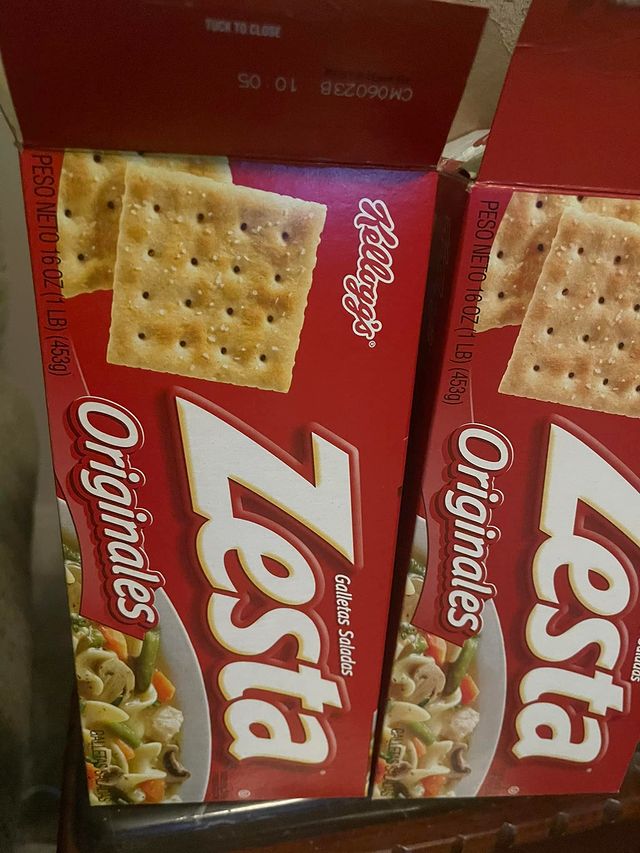
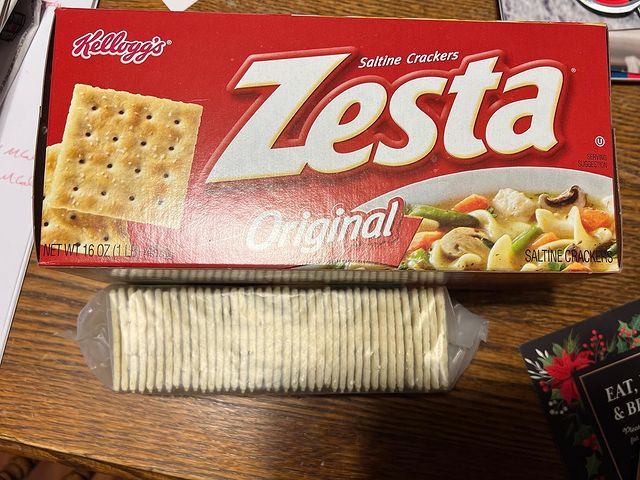
Commercials
A Zesta ad from the 70s:
A taste test:

My name is Brianna and I love writing on all topics. Candy history fascinates me and I am passionate about sharing my love of this topic with everyone else!
Please leave a review or any memories of this snack in the comments below. Thank you!
Click here for a full A-Z list of Snacks and Candy
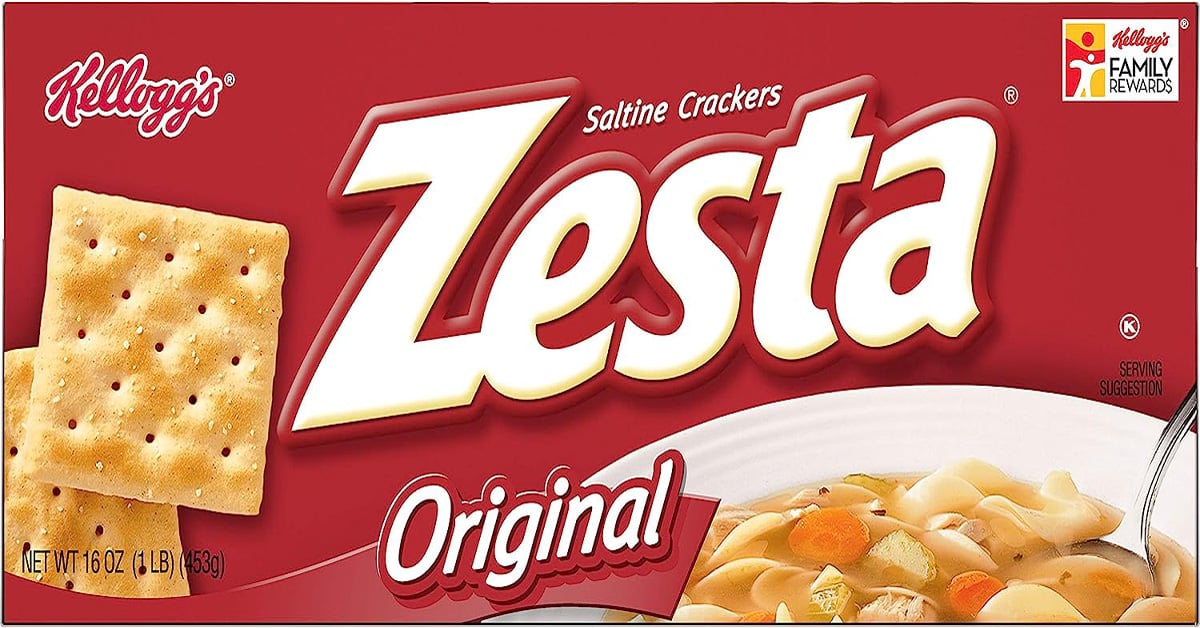
I have been a faithful Zesta cracker consumer for now nearly 65 years. During Covid-19, your crackers were at times difficult to find and upon finding them something was different. I don’t know if it is a change in recipe, the manner in which you cook, the packaging process or time lapse between finishing cooking and packaging. All I know, something has definitely changed. I have purchased Zesta cracker from at least 15 different locations across the state of North Carolina and have found the same issue. Zesta crackers are “stale”, not crisp and not as much salt. We have three grown children who now have their own families and they agree, something has changed. Your product is NOT the crispiest crackers anymore. I am sorry to say, I am no longer a Zesta cracker fan. I would welcome you to contact me if you have any answers.
Thank you
40+ years for me. Have a box with expiration date late Nov, and in Sept, they are stale. The other box, they could not be bothered to stamp an expiration date. The crackers are stale, not crispy, lack flavor, and seem to be thinner, because they break/crumble when trying to spread anything on them. I’m done, too.
I’m thinking this is my last box of Zestas — these went into the trash. Put in soup and they just become a blob of flour. Something is definitely different. Whatever cost-saving thing they did will end up costing a lot more in lost sales.
I agree – these are not the same crackers that I have loved for 50+ years. Until now they are the only saltines I would purchase for my family. The last box I purchased the crackers seemed stale and now where near what I was expecting. They have lost the crispiness and saltiness of the previous product. This is a huge disappointment!
we have bought Zesta Crackers for at least 62 years…and ou5 parents way before that……
However the last 2 boxes we bought were definately not the same as before….very, very thin….no taste at all…turned to “mush” when in the mouth….no salt (as in saltine)…….expiration dates of December 2023……the 2 boxes we now have are being fed to the rabbits…….WHAT IN THE WORLD HAS HAPPENED TO OUR FAVORITE CRACKERS…..WE WILL NOT BE BUYING ANY MORE….
I agree!! what happened to our favorite cracker. I guess we’re done ! my husband of 63 years says no more!!
I have survived on zesta saltines,whether it was with plastic wrapped American cheese like product,peanut butter,with or without jelly,as well as with soup or crumb on top of mac-n-cheese. Now days I don’t buy zesta, any cracker similar will do,based on price. But I still love saltine style crackers.